Well, It Looks Like We’re About to Reverse Engineer Influencer Marketing… You Know… So It’s Easier to Understand
Updated February 2019
Over the past few years, influencer marketing has become seamlessly integrated into our lifestyles. But what (EXACTLY) is it? A mommy blogger speaking well of a cream that helps reduce the discomfort of her baby’s eczema? Is it a celebrity endorsement? Is it influencer marketing if no money changes hands? How do we define it? How does it really affect us? More, how do brands translate Likes into store foot traffic? If you’re still having a hard time putting your finger on EXACTLY what influencer marketing is, I wrote this particular post for you. .

Buckle your seatbelts, kids. We’re going to “reverse engineer” influencer marketing!
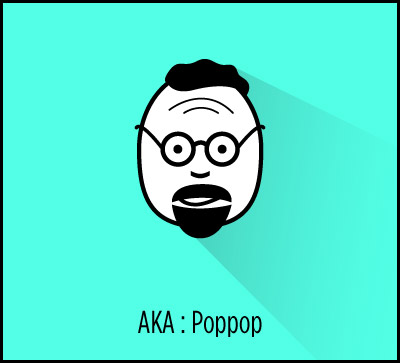
First things first. Don’t get confused by the jargon. There are a half dozen terms out there that essentially mean the same thing as influencer marketing: brand advocates, brand ambassadors, blogger advocacy, blogger campaigns, native advertising, sponsored posts, word-of-mouth marketing.
Some of those terms are less interchangeable than others, but they all pretty much describe the method of marketing using the publicized experiences of authentic, relatable, unbiased people. This is in stark contrast to marketing with the more traditional styles of advertising, all of which are based on branded content and shiny marketing messages.
To preface our discussion, let me tell you what inspired this “Influencer Marketing in Layman’s Terms” post. It all started when my grandfather asked me (for, like, the fifteenth time) what exactly it is that I do. My grandfather was 85 at the time and he calls me every other week with conversations that go something like this:
Let’s First Look at What Influencer Marketing Is NOT
A key difference between influencer marketing and traditional marketing is that influencer marketing isn’t created by the brand. In fact, it’s not even branded. When done well, this type of marketing won’t even look like marketing.
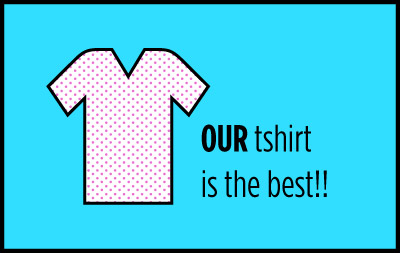
Typically, when we think of brands marketing themselves, a certain collection of marketing collateral and brand behavior pops into our heads: Newsletters, banner ads, social media posts, and pretty much any other opportunity the brand seizes to let the world know how great their products are.
Come to think of it, isn’t it odd that this type of advertising was ever really effective at all? A brand telling you that THEIR own product is the best is like a doting parent telling you that THEIR kid is smarter than everyone else’s kids. Or when I boast about my smart little pug (who really IS smart. Like smart smart. Like the smartest little pug in the whole wide world) but I’m only referencing my little genius to drive home my point). Which is that no one believes me, even when I insist. And no one believes those bragging parents or their bumper stickers. The same thing goes for all those brands proclaiming their own greatness.
One reason why old school marketing isn’t as effective is because technology has afforded today’s consumers the ability to get wise to a product long before he or she ever comes face-to-face with any brand representatives. They do it through online reviews, chatty groups on social media, the company’s website, its competitors websites… Today’s consumers can even spot fake reviews when they crop up in the results. Our spidey senses start tingling and our BS-ometer rises to the orange level. As we have access to more information, the branded approach to marketing is becoming increasingly ineffective.
An article on Forbes.com by Kimberly Whitler, quotes a 2012 stat, confirming the same 2016 finding from CMO: consumers just don’t trust brands.
 Data shown above is from Nielsen’s Global Trust In Advertising Survey
Data shown above is from Nielsen’s Global Trust In Advertising Survey
CMO says a brand’s ability to establish trust accounts for 30 percent of total brand loyalty. As time and technology makes it harder for consumers to determine what’s real vs what’s not, more people around the world trust earned media – such as recommendations from friends and family – above all other forms of advertising. Who knew “earned media” was even a thing?
Consumer confidence is shaken because many brands are resorting to brute-force marketing tactics. And that just doesn’t work.

What do I mean by brute-force? Well, let’s start with an example.
One day you’re on the Internet checking out black leather jackets.
Maybe you’ve always wanted one or maybe you recently watched a rerun of Happy Days. Either way, it just so happens that you’re searching online. You stumble upon a random product page from Macy’s and before you even know what’s happening, they’ve ensnared you in their trap. Suddenly, you’re in the middle of a full-on ad attack and for the next year – winter, spring, summer, and fall – you can expect to see that damn leather jacket following you around the Internet, interrupting you with presumptuous reminder emails, popping up when you’re reading the news, commandeering your Facebook feed. They won’t stop until that jacket is haunting you in your dreams, making you rue the day when you innocently decided to google “black leather jacket”.
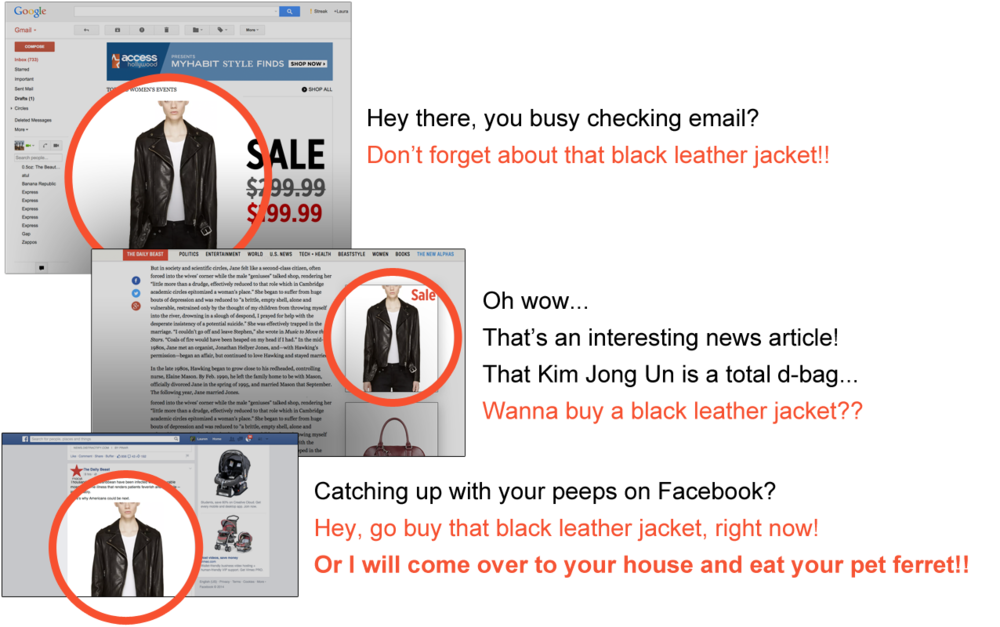
Now, if you are anything like a normal human being, that leather jacket is not the only thing that caught your eye, which means every item of clothing you clicked on – whether intentional or not – will now “Walking Dead” you around the web, lumbering behind, and showing up on every site you happen to visit.
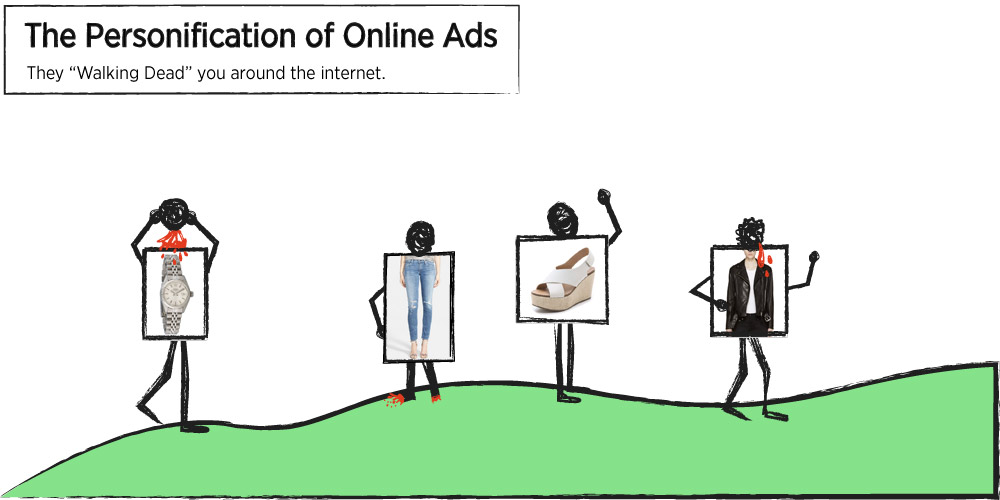
a
It’s all fun and games until people start going crazy.
The point I hope I’m driving home successfully is this:
BRANDED marketing comes across as disingenuous.
It’s loud and in-your-face.
It interrupts you.
It fights you, tooth-and-nail, for your attention.
Now let’s compare the above (branded) approach with that of Influencer Marketing…
Influencer marketing is the exact opposite.
It’s subtle.
It’s NOT in-your-face.
In fact, most of the time, people don’t even realize they’re looking at it.
We’re far enough along here where a definition might be useful. Let’s see if you’re sharper than my 85 year-old grandfather.
Influencer marketing is the practice of paying for social proof. Brands work with everyday people who have an interest in – and are willing to – promote their products. These people are unbiased and have no vested interest in seeing the brand increase their sales; their only value to the brand lies in the fact that they organically have the one thing all brands are clamoring to get – the attention of a very targeted audience. It is often the case that a brand will have to woo an influencer and provide him or her with a compelling enough reason (usually a great product and money for endorsing that great product) to present the brand’s product or message to the influencer’s hard-won audience.
The job of an influencer is to help you win genuine interest in your product. They spread the word about your product in a uniquely creative and unbiased way. As a result, they get your product in front of people who are conditioned to completely ignore traditional advertising. Score!
Okay, so back to our big example of the leather jacket, the wedge, the watch, and the jeans. In case you’ve forgotten and are too lazy to scroll back up, these are the products…

When we last checked in, we were being chased around the web by the Macy’s retargeting monsters.
Now, check out the subtlety and authenticity of these same products being advertised low-key by an influencer.
The example below is from Sabrina Fenster’s Vancouver-based, street style blog, StreetScout.Me. Sabrina’s taken those same products and made them into a look that’s distinctive and real – something most big brands miss the boat on when it comes to advertising.
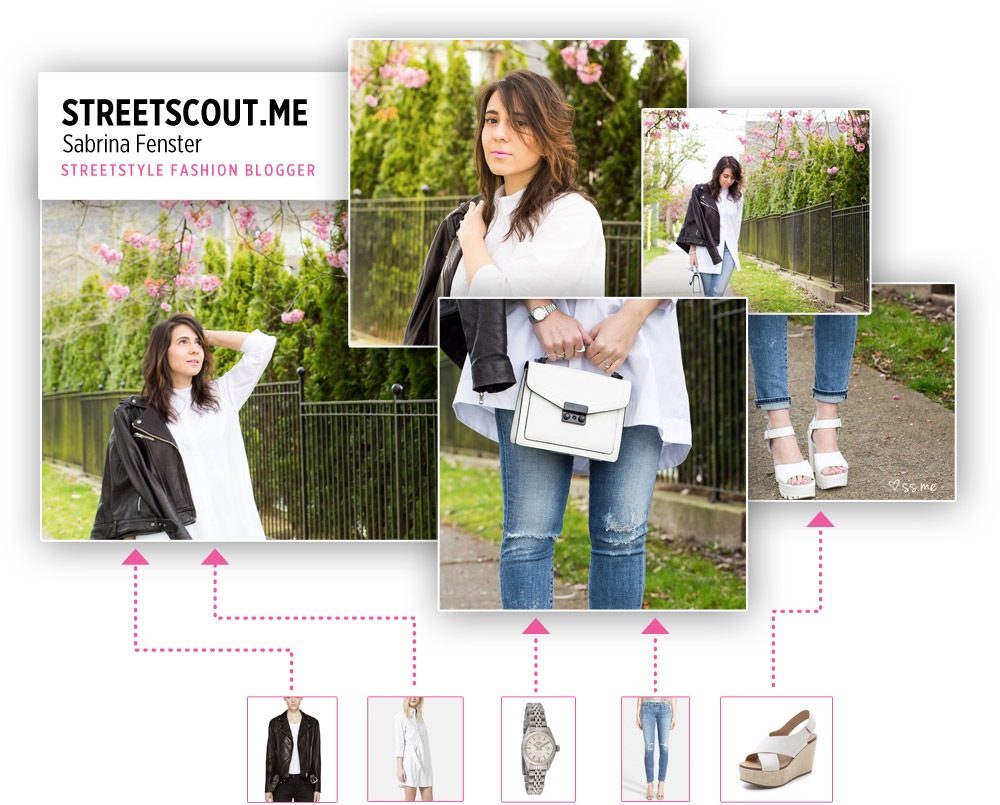
Why is Influencer Marketing So Great??
#1. Influencers know how to thrill!
In the example above, Sabrina’s photos aren’t salesy. They’re not even pitching. For all I know as a reader, Sabrina’s just updating us on her typical Tuesday. The difference between traditional marketing and influencer marketing are targeting and context. Sabrina’s photos not only make these products look much better than the original product shots, her photos also provide real-world examples of how these products can fit together into an outfit that a REAL person would wear.
The same goes for men. The pompadour haircut, infinity scarf, and cigarette-legged pants all came from somewhere – a striking image some guys saw somewhere that stuck in their minds. Oh, and many thanks to the companies who made bushy beards, big glasses, and cardigans a look. Geeks are the new billboards. The annoying banner ads of yesteryear are officially obsolete.
#2. Influencers allow brands to strike when the timing is perfect!
Let’s talk about timing.
The psychology of traditional advertising worked because advertisers had a captive audience. People were on the couch every Thursday watching whatever shows NBC had lined up. It was too much of a hassle to get up every commercial break, so brands essentially had a captive audience. That’s not the case anymore. People aren’t consuming media according to a broadcaster’s schedule anymore. We now consume media how and when we want to. What does that mean for advertisers?
Ads are being skipped… and therefore becoming increasingly useless.
Ads interrupt you as you’re doing other, more important things, like watching adorable babies with bed head try to master the art of sleep-eating. Influencers don’t interrupt because, unlike advertisers, they don’t have to wait until they have a captive audience. When an influencer’s reader lands on his or her website or social page, the reader is coming there for a specific purpose – to be influenced. That’s why a popular vlogger like Zoella can make videos that outperform those of multi-billion-dollar companies like Maybelline.
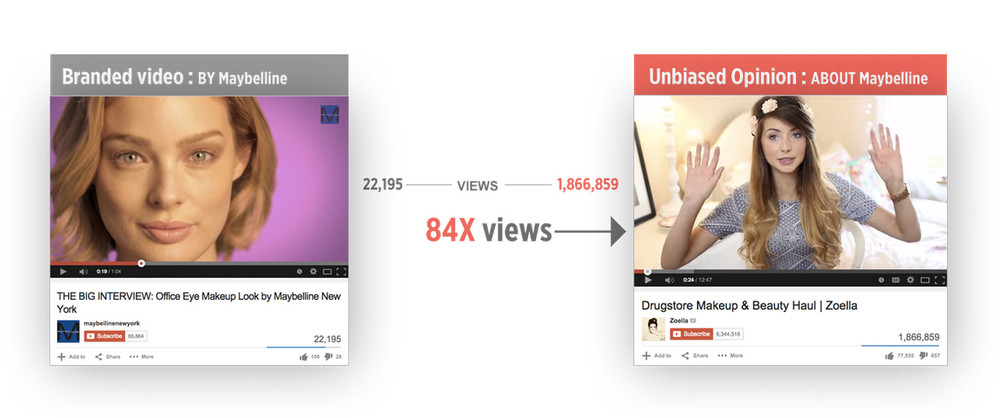
Zoella present products to her audience when they are in their most receptive state. Unfortunately, without the help of an influencer like Zoella, Maybelline doesn’t have that same advantage.
How does Smartphone footage of a young woman talking about makeup in her bedroom get 3 million views while Maybelline’s social marketing team only grabs 22K views?? Two words:
I already talked about why people trust social influencers more than they trust branded ads. Relevance is another hurdle brands have to overcome. Many brands still create ads like they did 20 years ago – they want to somehow find a way to present Hollywood icons, models, and CG to the typical consumer and send the message that, “You can have all of this.” But in many segments, consumers have outgrown that message. They want something they can relate to, something that resonates with them. Very few of us can relate to being on the set of a national commercial spot, trying to make our makeup perfect for the green screen. Zoella’s video wins because most of us know what it’s like to go to the store, grab a bunch of different products, and play with them at home in our bedroom.
#3. Influencers can expand a brand’s target demographic.
Influencers have the ability to reach a huge variety of audiences because they each have unique opinions and approaches towards their lifestyle and the products they choose to incorporate. They are like alien ambassadors who translate your mission of peace into Klingon for you.
I went there. Or should I say pa’ jImejbej!
Part of the advantage brands gain by working with influencers is loss of control. Let’s face it, big companies are slow to latch on to emerging trends. And if they were calling the shots with influencers, it would be more bad commercials and more hit-and-miss print ads.

But the freedom that influencers have to determine how to market products is what enables brands to reach that wider audience.
A beautiful example of this in action (at a very HUGE scale) was the Lord and Taylor Instagram Blitz.
To promote the launch of the Design Lab line, Lord & Taylor decided to focus its marketing power on one paisley dress (shown to the right). No, I don’t know why. Take a look at the product shot. It isn’t terrible…but it’s nothing special. In all honesty, I wouldn’t have given it a second glance if I was browsing their website.
They brilliantly sent this same paisley print dress out to 50 Instagram influencers and encouraged each to style the dress in a way that reflected her personal fashion sense. Then L&T had all the influencers post about the dress on the same day. And that’s exactly what they did. Check out the range this dress actually has when the backdrop is real life on a person with a unique style…as opposed to the infinite white of a studio photo with the dress atop a headless, legless mannequin.
 Photos courtesy of Arielle Noa Charnas , Jeanne Grey , and Cara Santana .
Photos courtesy of Arielle Noa Charnas , Jeanne Grey , and Cara Santana .
At least twenty media articles, hundreds of comments, thousands of Likes and one FTC finger-wag later, the dress sold out. In hours.
OK, now that we all know what influencer marketing is…and why it’s awesome…let’s cover a few common painpoints and concerns that I frequently hear from brands who are new to the space.
Pain Point #1: Influencer marketing is messy.

Yes. There’s no cookie-cutter method for handling 50 influencers, each with their own platforms, ideas, styles, and requirements for entering their domain. When you enter their world, you play by their rules, at least to an extent. So when we see marketers jumping into this space, they often find they don’t really know how to leverage it. They’re used to PPC ads with immediate (although dangerously vain) ROI in the form of clicks.
Clicks that may or may not result in a sale. It’s a world where brands can get exactly what they pay for.
Influencer marketing has a very different setup. For starters, you’ll be working with influencers. And just like their extremely diverse styles and audiences, you’ll encounter that same level of diversity within their work-styles. You’ll get presented with various pricing structures, payment processes, time frames, and attitudes. There are no guarantees. And the process, as a whole, can be messy.
But, this messiness is the entire reason WHY influencer marketing works so well. It wouldn’t be effective if it wasn’t organic! So the messiness comes with the territory.
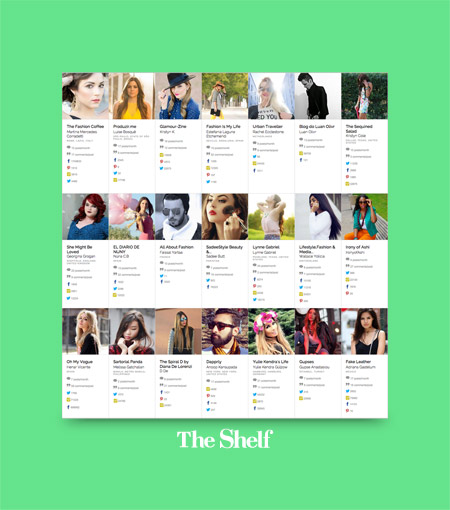
If you’re looking for an easy solution, there isn’t one that will take away all of the work, BUT platforms like ours, The Shelf, will streamline the crap out of it! Plus, we’re totally great with targeting down to the finest nuance…which, in the end, will give you better ROI than what your marketing intern will be able to achieve after slaving over the campaign setup process for months.
And even if you don’t want to use our platform, our blog posts are turbo-thorough (if you couldn’t tell from this post), and we’ll get you up and running, as well as armed with the info you need to run successful campaigns, right out out of the gate!
-
This post runs through the whole process.
-
This post is a step by step guide on how to structure your first campaign.
-
This post runs through what to expect in terms of influencer-pricing (so you don’t get burned)!
-
This post covers outreach.
-
And then there are series of posts on vanity metrics here, here, and here…because vanity metrics can really jump up and bite you on the butt if you’re not careful.
Pain Point #2: There are no guarantees.
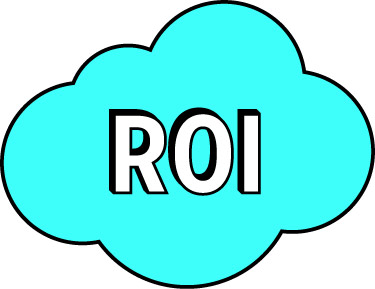
True. Most influencers won’t guarantee a particular ROI. If you find one who does, latch onto them and don’t let go.
But most don’t. And that can be both a blessing and a curse. This post of ours goes into every ROI question you might have, but to summarize, I think the lack of a guarantee is actually a good thing.
If you’re coming from a PPC background then you’re probably looking for numbers. But, let me wipe the stars from your eyes for just a moment to remind you that while Google Ads give you a guarantee in terms of CLICKS, clicks are not qualified leads, and they are definitely not sales. If you really assess the quality of leads that come through Google Ads, you may be willing to finally admit to yourself that they are so-so at best.
You assume more risk with influencer marketing because there is no “clicks guarantee.” But this risk is tied pretty closely to how well you select your influencers. If you find one who is the exact poster-child of the products you’re selling, you can expect the quality of leads coming through that influencer to be much better than what Adwords would produce for you given the same budget. Paying the RIGHT influencer can give you wonderful, AMAZINGLY successful results.
One more thing: When your Google ad reaches its allotted budget, there are no more leads coming through to you. Like, zip. The Google bots will hear none of that. But with bloggers, their posts about your product remain in the form of great evergreen content and viral images long after your payment to them is gone. Influencer marketing presents you with the unique opportunity to grab residual leads from once-and-done marketing efforts for months after the marketing event. Plus, if the influencer had a good experience with you and your product, be on the lookout for further honorable mentions from that influencer. We like to think of it as the gift that keeps on giving.
Pain Point #3: Disclosures screw up the authenticity.
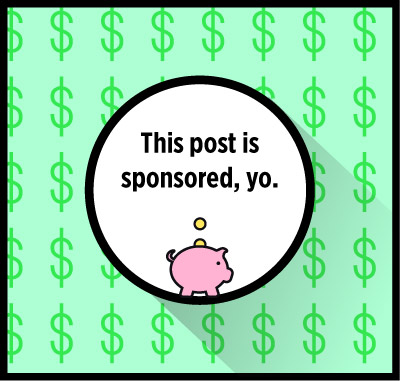
Many brands get SUPER worked up about FTC disclosures. They fear that if readers and followers know that they’re reading an ad or sponsored post, it will make the posts less effective and brands won’t get the most bang for their buck. The key thing to remember here is bloggers are very discriminating. Most of them aren’t going to cover a product they don’t like because they’ve spent years developing their own brands and building a following. They are not going to risk it all to promote a soft-soled shoe. So brands aren’t paying for an endorsement, they are paying for entry into the blogger’s world. You’re paying for the blogger’s attention and their ability to direct the attention of thousands of other people to your brand.
Case in point:
I am quite the enthusiastic shopper in my own right… And because I run an influencer marketing platform, I am more aware than almost everyone out there that lots of product endorsements are paid for by brands.
But when I’m trying to find cute sandals for summer (which I was literally just doing five minutes ago), I have my go-to bloggers that I follow and I check out some of their recent posts. I browse my favorite pin boards and if I see something I like, I couldn’t care less what’s sponsored or not sponsored. I’m on the lookout for sandals that are awesome (and inexpensive). This is the way many of us discover new brands and it’s a fun and exciting way to find smaller, new brands that don’t otherwise have widespread attention. We, meaning all of humanity, need those sponsored posts!
I joined Stitchfix as a result of a blog post.
I joined Blue Apron as a result of a blog post.
I joined Barkbox as a result of a blog post.
I recently found (and joined) TheGoldenTote because of a blog post.
And if Happy Socks had a subscription service. I would join that as well. Because they are awesome.[Hmmm, I didn’t realize I was such a subscription-box nut til listing them out just now. Ha!]
But in all seriousness, I knew these posts were sponsored. However, all of those subscriptions were super useful, so the knowledge of the sponsorship didn’t affect my decision in the least. AND months/years later, I’m still a member of all of them.

Another super on-point example…Last year, I got a bitten by the DIY bug and I built a whole bunch of pipe furniture. “Pipe furniture?” you ask. I found a pin on Pinterest that originally came from a blog post sponsored by The Home Depot. The pin itself may or may not have been sponsored. I don’t know and I don’t care. Anyway, after seeing this pin and reading the tutorial, I had to have some pipe furniture, so I went to Home Depot and bought the exact materials that the blogger listed in her instructions.
I actually liked that first pipe-table so much that I built TWO MORE pipe tables AND a coat rack! So that was three more Home Depot trips that were all a result of that one blog post that may or may not have been sponsored.
So what (you might be saying)? Well, the numbers that this blog post tutorial generated will show you the true power of influencer marketing:
-
On Facebook it received 125 likes, 86 shares, and 44 comments.
-
On Pinterest it was repinned a whopping 54,111 times!!
Through this blog post, The Home Depot tapped into a totally new market (for products that are typically used only in plumbing). And this post presents these products in such a compelling way, that you can imagine within the 54,111 times that this was repinned, a huge number of people probably went out to Home Depot and dropped a few hundred bucks, just like me.
I think my point here is this: The only time consumers really get bent out of shape about sponsored content is when the post doesn’t support the original mission and theme of the blog itself. If it’s a post about the most delicious, fancy gourmet cheese from our vegan sister, that ticks us off a little and lets us know she’s selling out.
If you target your market and your influencer properly, the marketing will go off without a hitch and without ruffling any feathers. They’ll just see it as a super dope product that you’re selling, and they will buy.
We have a whole post devoted to disclosures with ideas for writing them creatively AND honestly, and I think it will make you feel a little better if you’re still an FTC-hater. Don’t be a hater.
Painpoint #4. We sell niche products that might not do well with influencers.
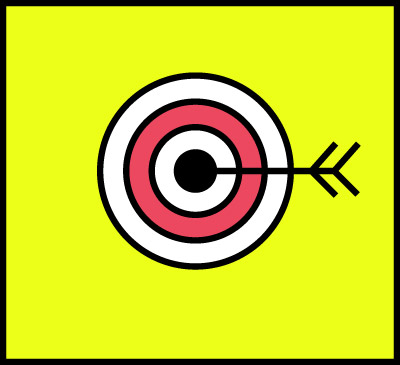
If you think you sell something weird and that no one will get it or want it, you must not be familiar with a tool we use to find anything and everything. It’s called the Internet. Trust me. Your crowd is out there. You just have to look for them…and sometimes it’s the long tail.
Then, you need to find influencers in that space. Influencers exist in every industry, and the other important thing to note is that you can get super creative with your influencer targeting. Just because you sell underwear doesn’t mean you need to find underwear bloggers (yes there are a few of them out there). But, everyone wears underwear. Lifestyle, fashion, and mommy bloggers, for example, are all perfectly equipped to get in front of the right people and sell those undies off the rack. Just remember that it’s about demographic-matching, not vertical-matching.
There are influencers out there for just about every industry. The chart below is a bit old (a senior citizen in Big Data Years), but it gives a pretty cool breakdown of influencers across 16 of the top industries.
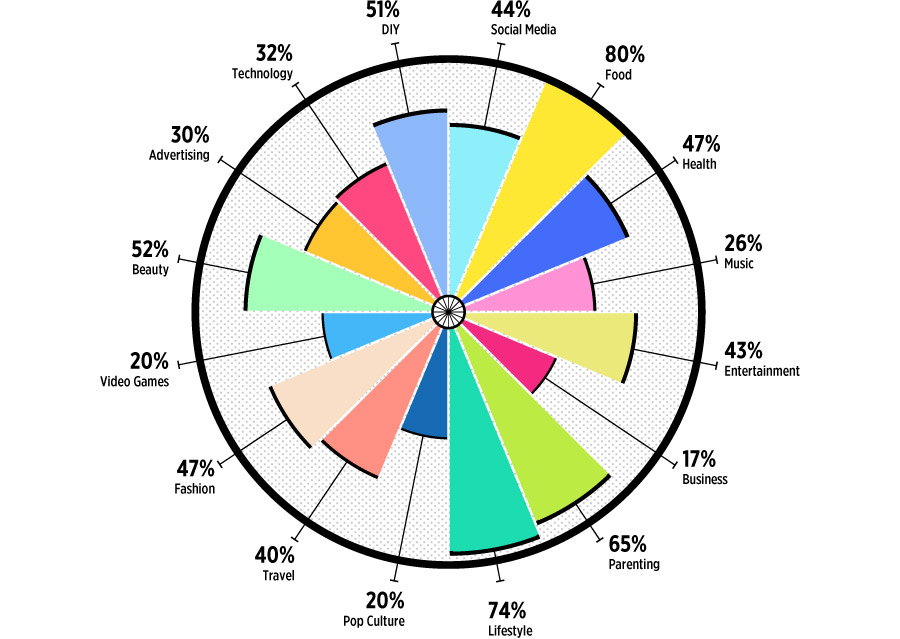 Source: Izea
Source: Izea
Wrapping Up
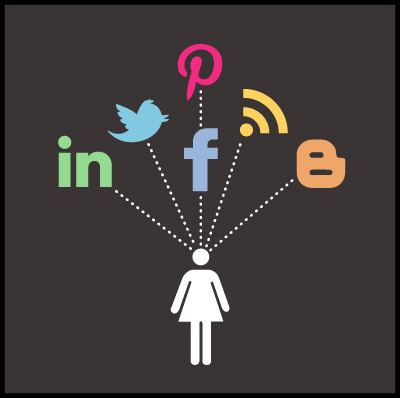
Let’s finish up this 15-minute training course exactly how we began, talking about my grandfather. He was right about something: Influencer marketing is nothing new. An influential dude by the name of Liberace did it back in the 1950s when he got people to go in droves to Citizens National Trust and Savings Bank, to the tune of $400,000 in new business in just four weeks with an average deposit of just 10 bucks ( about $100 or so today). He did this by mentioning how he admired the bank’s products. Liberace was so influential during the 1950s, the papers pegged him as a sorcerer.
Influential people have been around since the beginning of…well, the beginning of people, I guess.
The only difference between influential people from back in the day and the influencers of today is internet access. Harnessing their power before the Internet was a much bigger feat, but the Internet as well as social networks and blogging platforms have allowed the voices of influencers to travel far and wide in ways that weren’t eve imaginable. Birthing in the process, the greatest form of marketing EVER!
Hopefully this article brought you up to speed on what influencer marketing is. The next thing for you to do is to start influencer marketing! We can help with that. Either sign up for a demo, or check out our resources section, where we have more articles just like this.

There’s no time like a brand new year to implement marketing strategies that you KNOW work… but you may be dragging your feet on doing. I mean, the planning, the strategy, wooing influencers, shipping products, monitoring campaigns… IT’S A LOT! We get it. But we also have a pretty cool platform that will streamline and automate most of the headache-inducing aspects of influencer campaigns PLUS we have a pretty cool team of hipsters, cool kids, and marketing savantes that will make your influencer campaign much easier to handle and also crazy profitable. Seriously, we’re all about that ROI. In fact, our influencer marketing platform takes away the guesswork and comes with a ton of our patent-pending ROI-prediction reports that are jargon-free, easy to understand, and will help you sleep well at night. You’ll know right off rip exactly who’s representing your brand and whether or not your collaboration with them will pay off. So… contact us if you want to make a ton of money from your marketing efforts. (How’s that for a CTA?)
Or give us a quick call : (212) 655-9879

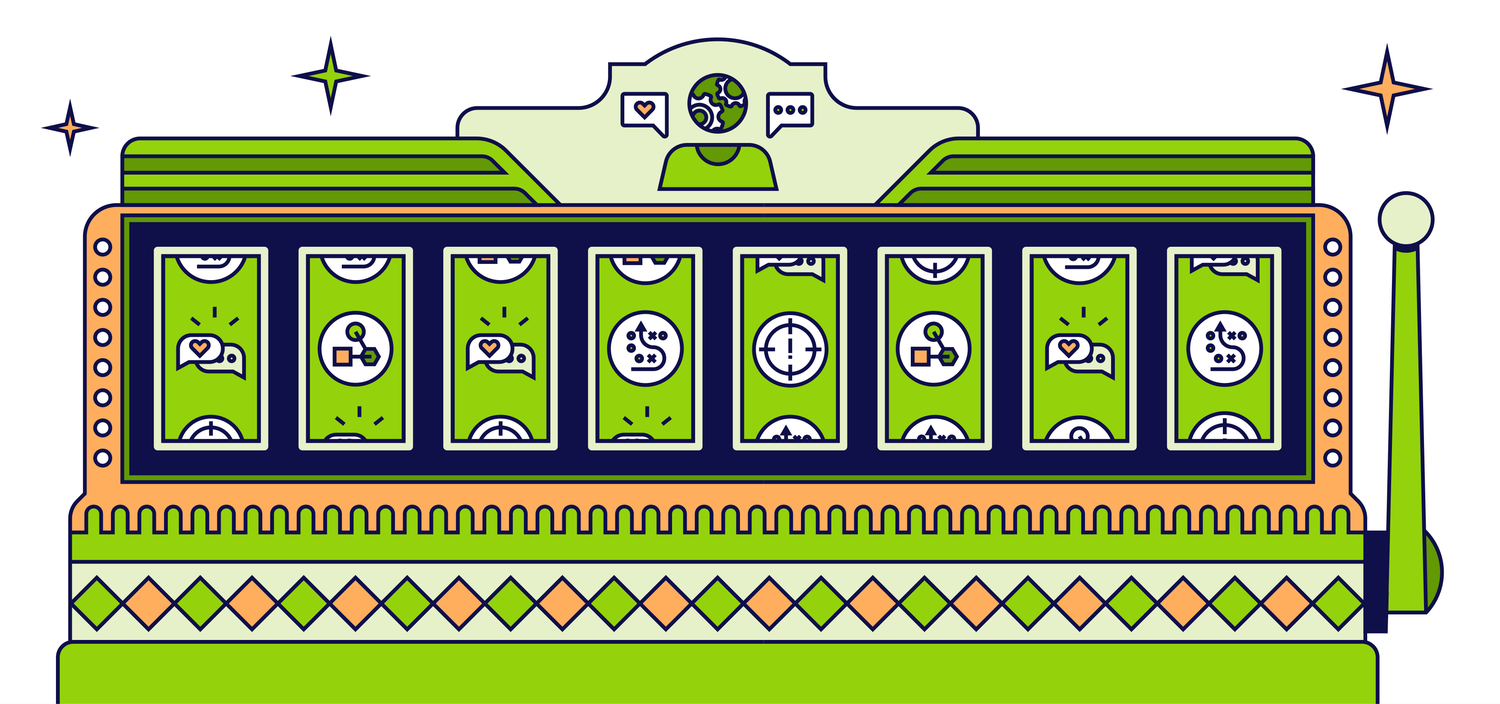






Leave a Reply